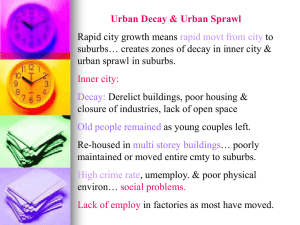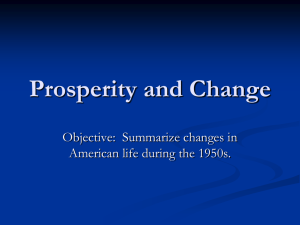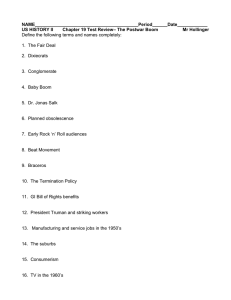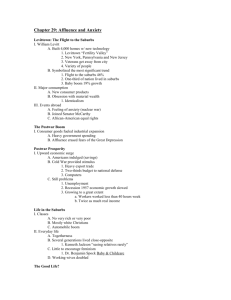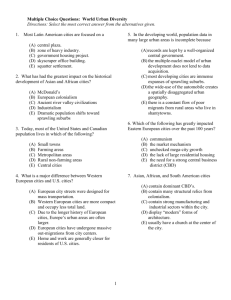Sample Response Essay Goin' Gangsta
advertisement
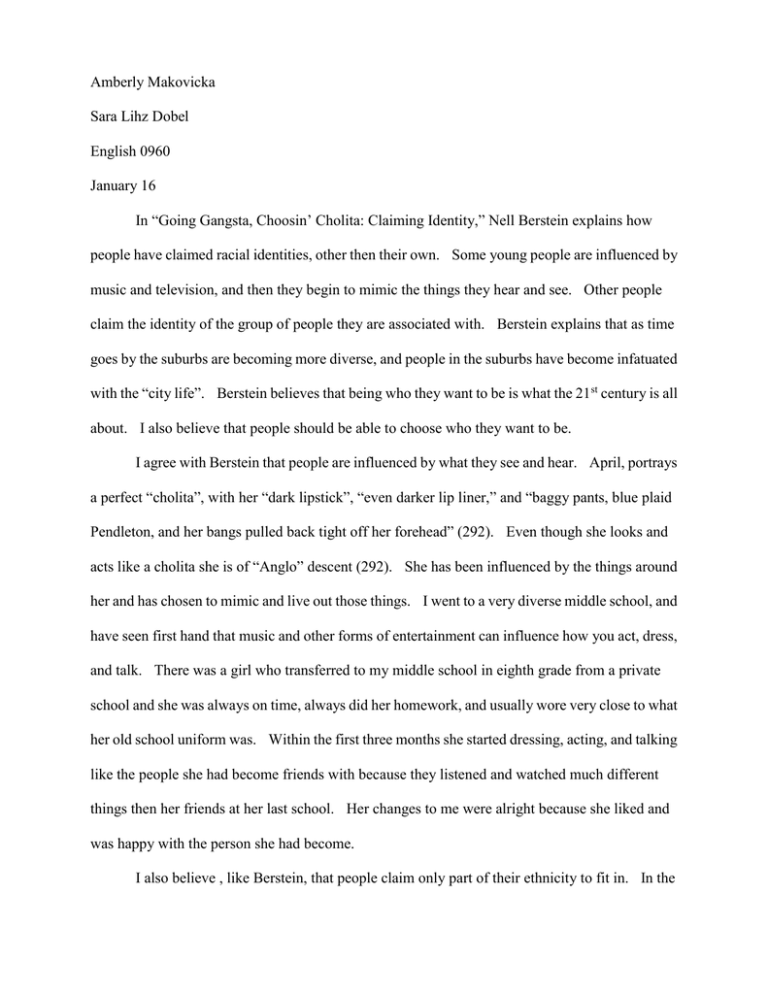
Amberly Makovicka Sara Lihz Dobel English 0960 January 16 In “Going Gangsta, Choosin’ Cholita: Claiming Identity,” Nell Berstein explains how people have claimed racial identities, other then their own. Some young people are influenced by music and television, and then they begin to mimic the things they hear and see. Other people claim the identity of the group of people they are associated with. Berstein explains that as time goes by the suburbs are becoming more diverse, and people in the suburbs have become infatuated with the “city life”. Berstein believes that being who they want to be is what the 21st century is all about. I also believe that people should be able to choose who they want to be. I agree with Berstein that people are influenced by what they see and hear. April, portrays a perfect “cholita”, with her “dark lipstick”, “even darker lip liner,” and “baggy pants, blue plaid Pendleton, and her bangs pulled back tight off her forehead” (292). Even though she looks and acts like a cholita she is of “Anglo” descent (292). She has been influenced by the things around her and has chosen to mimic and live out those things. I went to a very diverse middle school, and have seen first hand that music and other forms of entertainment can influence how you act, dress, and talk. There was a girl who transferred to my middle school in eighth grade from a private school and she was always on time, always did her homework, and usually wore very close to what her old school uniform was. Within the first three months she started dressing, acting, and talking like the people she had become friends with because they listened and watched much different things then her friends at her last school. Her changes to me were alright because she liked and was happy with the person she had become. I also believe , like Berstein, that people claim only part of their ethnicity to fit in. In the essay Berstein says “a brown skinned girl with a Mexican father and a white mother claims her Mexican side while her light skinned sister claims white,” (293). The girls aren’t claiming something they aren’t, they are simply claiming only part of their ethnicity to fit in. While I was in high school I knew a girl named Kesha and she was half white and half African American but claimed she was white. Kesha was for the most part was friends with white people so she found it easier to fit in by only claiming her father’s ethnicity. Except for a few close friends she always told people she was white, and was happy with the choice she made, so no one cared that she didn’t always tell people the whole truth. I have seen first hand and agree with Berstein that as the suburbs become more diverse, the kids in the suburbs become “infatuated with the city life,” (293). Will is one example of such kids. He lives in the suburbs and him and his friends call themselves “city people,” and they like the “action,” that comes along with that denotation (294). They are bored with what they see and do everyday so they are choosing to do what they are now seeing. When I was young I also lived in the suburbs and as they became more diverse my friends in the neighborhood became infatuated with what was going on. There were suddenly break-ins, drug deals going on across the streets and fights. None of the kids in the neighborhood did any of those things they loved to hear about it and make people perceive that they were doing it. It’s not always easy to fit in so sometimes people mimic the things they see and hear, or they claim half of their identity to fit with the people they are associated with. Some kids become bored with the life they are living in the suburbs so as the suburbs become more diverse they pick up the things they see. People are finally breaking down the barriers that have gone on for many years and are getting back to what the country was founded on, that is choosing who you want to be and not having to deal with backlash from other people.

